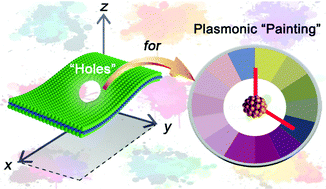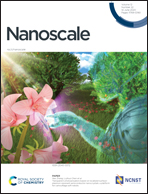Layered MoS2 defect-driven in situ synthesis of plasmonic gold nanocrystals visualizes the planar size and interfacial diversity†
Abstract
Current defect theories significantly guide broad research progress, whereas the recognition of defect status remains challenging. Herein, MoS2 defect type, density and exposed state are visually identified with a reagent indicator of HAuCl4. Mo-terminated defects spontaneously reduce [AuCl4]− anions and oxidized Mo species are dissociated. Consequently, MoS2 edges guide the epitaxial branch of Au nanocrystals (NCs), followed by sequential growths at their planar defects. The size-evolution processes of LaMer growth and planar packages of the aggregative growth of Au/MoS2 nanoseeds result in the occupation of Au atomic layers on heterostructures. Consequently, shell–core hybrids are presented with localized surface plasmon resonance characteristics. The mechanism is systematically explored via the discriminated performance of plasmonic characteristics of Au nanostructures on semiconducting MoS2 substrates. With plasmonic identification, defect-associated size and interfacial diversities of MoS2 are visually information-rich. Tunable morphologies and synergistic optical characteristics of plasmonic semiconductor heterostructures inspire many more applications through the edge and planar defects intrinsic in layered MoS2.



 Please wait while we load your content...
Please wait while we load your content...